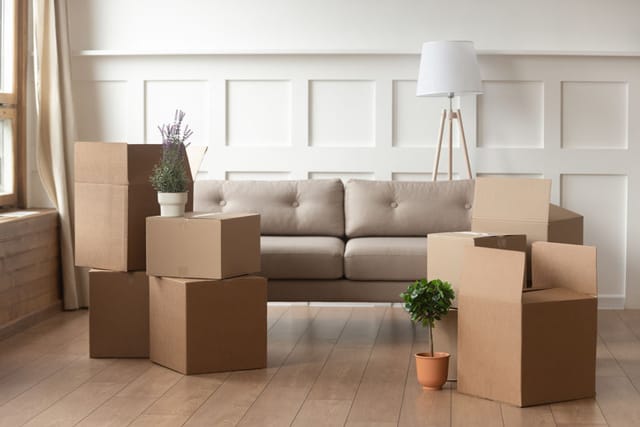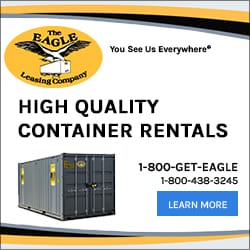
When you’re running short on storage space, renting a storage unit is the most efficient and practical solution. It’s much more affordable than moving to a larger home or business, and you can rent the unit indefinitely or only for a limited time, depending on your needs. Storage units also provide great security when it comes to protecting your belongings.
But while storage containers can be a convenient and secure way to keep your belongings stored nearby, you might be unsure of exactly how much space you need. Sizes of storage containers can vary widely, and since larger units will cost more, figuring out exactly how much space you need is the smart move, budget-wise.
List the Items That Need to Be Stored
Before you look at different sizes of storage units, take time to sit down and list out all of the belongings that need to be placed inside. Whether it’s tools and equipment for your business, furniture from your home, or building materials for a construction project, having a clear inventory of everything that needs to be stored is crucial for determining the right storage container dimensions. You may even come to realize that certain things you planned on storing you’re better off keeping at work or in your home, saving you on storage container space.
First, list out all large items that can’t be boxed up. Take measurements of these items and note whether they can be stacked or disassembled for easier storage.
Next, compile all the smaller items that need to go into the storage unit. If you have a lot of these items, organize them into boxes or bins. Once these smaller items are boxed up, write down the number of boxes and the dimensions for each one. Add labels to the outside of each box or bin to make sure you can easily find any smaller items you might need once they’re placed in storage.
Once you’ve gotten a good idea of everything you need to store, you’re ready to figure out what size storage container you actually need.

Calculate Storage Unit Dimensions
Next, it’s time to compare the dimensions for various storage containers to determine what size will work for you. You may be wondering the answers to questions like, “How many boxes fit in a 20-foot container?” or “How much furniture can fit in a 20-foot container versus a 40-foot container?” Here’s a helpful comparison of three standard storage unit sizes available from Eagle Leasing:
10-foot storage container: This container has a capacity of 561 cubic feet (interior dimensions are 9’ 4” x 7’ 8” x 7’ 9 7/8”). It is comparable in size to a large walk-in closet.
What are some fun things you could store in this container? To give you a better idea of this container’s size, a few options you could store inside include:
- 240 PlayStation 5 consoles
- 1,730 basketball sneakers
- 4,038 iPhone boxes
- 33,392 cans of Spam
- 2,563 cans of paint
- 138 bags of grass seed (50lb)
- 53 55-gallon drums
- 8,030 rolls of toilet paper
- 130 ladders (6-ft)
- 10 storage totes (4’x4’x3’)
20-foot storage container: When it comes to 20-foot container volume, these containers have a capacity of 1,173 cubic feet (interior dimensions are 19’ 5 ½” x 7’ 8” x 7’ 9 7/8”). Each one is slightly smaller than a one-car garage.
Looking to really test the limits of storage? If you were so inclined, the internal dimensions of a 20-foot shipping container could accommodate:
- 480 PlayStation 5 consoles
- 3,460 basketball sneakers
- 8,076 iPhone boxes
- 66,784 cans of Spam
- 5,127 cans of paint
- 276 bags of grass seed (50lb)
- 106 55-gallon drums
- 16,061 rolls of toilet paper
- 261 ladders (6-ft)
- 21 storage totes (4’x4’x3’)
40-foot standard storage container: This container has a capacity of 2,389 cubic feet (interior dimensions are 39’ 5 ½” x 7’ 8” x 7’ 9 7/8”). It is comparable in size to two average-sized bedrooms combined.
You might be able to guess what you can store with such a massive container; if you’re looking to break a world record, you could certainly try storing the following:
- 960 PlayStation 5 consoles
- 6,920 basketball sneakers
- 16,152 iPhone boxes
- 133,586 cans of Spam
- 10,254 cans of paint
- 553 bags of grass seed (50lb)
- 212 55-gallon drums
- 32,123 rolls of toilet paper
- 522 ladders (6-ft)
- 42 storage totes (4’x4’x3’)
Plan Out Your Storage

Before you decide on a storage container size, be sure you think through how everything will fit into the space. Use the dimensions from your inventory list to figure out how things can be placed and stacked within the unit. Factor in whether or not you will need to store more items in the future and have additional space for that. Also, consider where you place your items as you pack your unit. Make sure to store objects you don’t need as often in the back, and more useful possessions up front.
Remember that you may not want all of your belongings packed in very tight if you plan to access them on a regular basis. These are long, narrow units, so be sure to consider whether you’ll have enough space to move around inside the unit and get to what you need. If you’re storing items that you won’t need to use anytime soon, on the other hand, you can pack your items into the container more tightly.
Contact Eagle Leasing for Your Storage Container Needs
Are you looking for an affordable and convenient storage container? Whether you intend to store thousands of iPhones (likely not), or store furnishings and décor during a home or business renovation, you can trust Eagle Leasing for your storage needs.
Since our founding in the 1960s, Eagle Leasing has grown to become the Northeast’s largest trailer and container leasing company. We provide great storage solutions for both residential and commercial clients, so check out our options today. Contact us by phone or email with any questions that you have.








